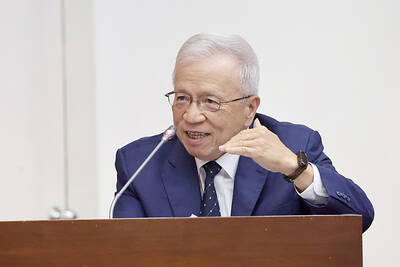A shortfall in the massive funding needed to build roads, ports, power plants and other infrastructure in Asia could dim the lights on the region's brightening economic growth, experts said yesterday.
While there are signs funds were returning to the region, the experts urged authorities to develop alternative sources of financing such as the bond market and increasing the participation of local banks for long-term lending.
They also said more needed to be done to carry out reforms to meet global standards in terms of enforcing contractual obligations and transparency to entice lenders to re-enter the market.
"Without the roads, without the lights turned on, you won't have the GDP growth that people are expecting," said analyst John Bailey of international credit rating agency Standard & Poor's.
Foreign funding for infrastructure development dried up between 1997 and 1999 as a result of the financial crisis, which burnt international lenders after borrowers defaulted on their loans.
Asian Development Bank (ADB) president Tadao Chino said recent estimates put Asia's infrastructure investment requirements at more than US$250 billion a year in the medium term.
"The need for external financing is tremendous," Chino said in a speech at the opening of the ADB's two-and-a-half-day meeting gathering the elite of the region's financial and banking sectors.
"The financing shortfall is a serious constraint to the region's continued economic growth and development, and to achieving the medium-term development goals."
He said infrastructure is "critical" for sustained economic growth and its impact extends to other sectors as roads and power generators for example can bring development and basic services to the rural areas.
Standard & Poor's said infrastructure finance volumes to Asia have grown steadily in the past few years, following a "dramatic decline" during the financial crisis.
"We are now beginning to see developers and banks return to Asia as the current economic recovery starts to fuel demands for large infrastructure projects," Bailey told reporters on the sidelines of the ADB meeting.
"It is important to say that this is not yet a full recovery. But it goes a long way from the Asian crisis," he said at a news briefing on the sidelines of the ADB meeting.
Surinder Kathpalia, head of Standard & Poor's in Singapore, said one of the critical issues in the next phase of Asia's development is investment in infrastructure.
"Unless these investments are financed, this could possibly choke growth going forward," Kathpalia said.
Bailey cited the case of China where power blackouts still happen because of under-investment in the energy sector.
"We've seen that the market still remains cautious about infrastructure projects in some parts of Asia ... Some of the painful lessons [from the financial crisis] are still in the lenders' and bankers' minds," Bailey said.
Lenders are now "increasingly bringing in more institutions such as the ADB and other multilaterals to diversify risks and are getting more aggressive about getting political risk insurance," Bailey added.
He said most developing markets in Asia still have weak legal environments which often prevent the enforcement of contractual obligations.
Legislations remain ambiguous and are rapidly changing, while disclosure levels are below international standards.

JITTERS: Nexperia has a 20 percent market share for chips powering simpler features such as window controls, and changing supply chains could take years European carmakers are looking into ways to scratch components made with parts from China, spooked by deepening geopolitical spats playing out through chipmaker Nexperia BV and Beijing’s export controls on rare earths. To protect operations from trade ructions, several automakers are pushing major suppliers to find permanent alternatives to Chinese semiconductors, people familiar with the matter said. The industry is considering broader changes to its supply chain to adapt to shifting geopolitics, Europe’s main suppliers lobby CLEPA head Matthias Zink said. “We had some indications already — questions like: ‘How can you supply me without this dependency on China?’” Zink, who also

At least US$50 million for the freedom of an Emirati sheikh: That is the king’s ransom paid two weeks ago to militants linked to al-Qaeda who are pushing to topple the Malian government and impose Islamic law. Alongside a crippling fuel blockade, the Group for the Support of Islam and Muslims (JNIM) has made kidnapping wealthy foreigners for a ransom a pillar of its strategy of “economic jihad.” Its goal: Oust the junta, which has struggled to contain Mali’s decade-long insurgency since taking power following back-to-back coups in 2020 and 2021, by scaring away investors and paralyzing the west African country’s economy.

BUST FEARS: While a KMT legislator asked if an AI bubble could affect Taiwan, the DGBAS minister said the sector appears on track to continue growing The local property market has cooled down moderately following a series of credit control measures designed to contain speculation, the central bank said yesterday, while remaining tight-lipped about potential rule relaxations. Lawmakers in a meeting of the legislature’s Finance Committee voiced concerns to central bank officials that the credit control measures have adversely affected the government’s tax income and small and medium-sized property developers, with limited positive effects. Housing prices have been climbing since 2016, even when the central bank imposed its first set of control measures in 2020, Chinese Nationalist Party (KMT) Legislator Lo Ting-wei (羅廷瑋) said. “Since the second half of

Taiwan Semiconductor Manufacturing Co (TSMC, 台積電) received about NT$147 billion (US$4.71 billion) in subsidies from the US, Japanese, German and Chinese governments over the past two years for its global expansion. Financial data compiled by the world’s largest contract chipmaker showed the company secured NT$4.77 billion in subsidies from the governments in the third quarter, bringing the total for the first three quarters of the year to about NT$71.9 billion. Along with the NT$75.16 billion in financial aid TSMC received last year, the chipmaker obtained NT$147 billion in subsidies in almost two years, the data showed. The subsidies received by its subsidiaries —